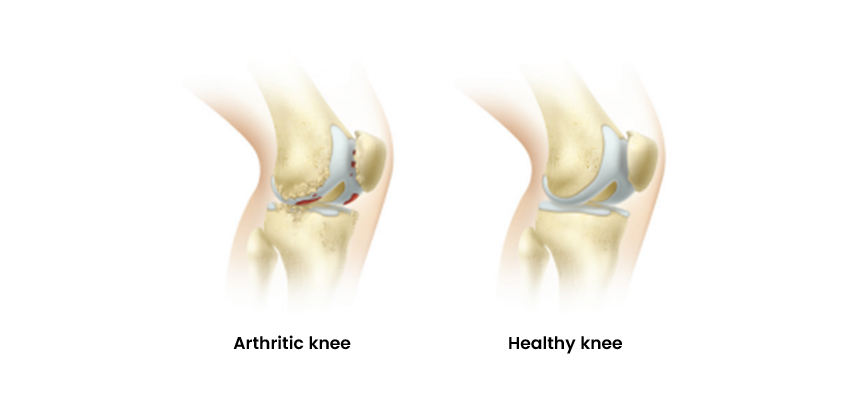ROSA® Knee System
Comprehending Robotic Advancements in Total Knee Replacement
Your uniqueness deserves tailored care, just like your individual anatomy. That's why Zimmer Biomet presents the ROSA® Knee robotic technology. ROSA, short for Robotic Surgical Assistant, is engineered to assist your highly skilled surgeon in customizing the precise placement of your knee implant to fit your needs. In this guide, we'll delve into what sets the ROSA Knee System apart, what you can anticipate before your surgery, the role of ROSA Knee during the procedure, and what to expect in the post-operative phase.
Arthritis in the Knee Joint: A Comprehensive Overview

The knee , a hinge joint comprising the tibia (shinbone), femur (thighbone), and patella (kneecap), relies on cartilage, a resilient lubricating tissue that safeguards the bone ends and cushions them during movement. Osteoarthritis, the most prevalent form of arthritis, emerges as a result of wear and tear, causing the deterioration of joint cartilage and bone. This degenerative process typically manifests after years of sustained joint motion and pressure. As cartilage progressively diminishes, the joint experiences heightened pain and restricted mobility. In cases where conventional treatments fall short in alleviating these symptoms, your surgeon may suggest a total knee replacement procedure, incorporating the advanced ROSA Knee robotic technology.
Before the Surgery
Prior to your surgery, your preoperative process will resemble that of typical total knee patients. However, unlike conventional knee replacement procedures, the ROSA Knee approach may involve the use of a series of X-rays to generate a three-dimensional (3D) model of your knee anatomy. This 3D model empowers the surgeon to meticulously plan various aspects of your knee replacement surgery in advance.
During the Surgery
The surgical procedure using ROSA Knee closely resembles a traditional total knee replacement but with the added assistance of a robotic system. Your surgeon has undergone specialized training to incorporate ROSA Knee into the surgical process, tailoring it to suit your unique anatomy. It's crucial to note that the robotic system operates under your surgeon's control, and it remains stationary until your surgeon initiates its movements. Your surgeon remains present in the operating room throughout the procedure, making all critical decisions.
During the surgery, ROSA Knee relies on a combination of a camera and optical trackers attached to your leg, allowing it to precisely monitor the exact position of your knee in space. Think of it as an incredibly detailed global positioning system (GPS) akin to the one in your car. If your leg shifts even slightly, the robot detects this movement and makes necessary adjustments, ensuring the precise execution of the surgical plan laid out by your surgeon. ROSA Knee continually provides your surgeon with valuable data about your knee, which, when combined with their expertise, guides them in positioning your implant accurately based on your individual anatomy.
After the Surgery
Post-surgery, the duration of your hospital stay will be determined by the personalized recovery plan your surgeon deems appropriate, typically spanning one to three days. The recovery period can vary among individuals, but as a general guideline, most patients can expect to resume driving after approximately two weeks, engage in gardening activities within three to four weeks, and get back to golfing after a recovery period of six to eight weeks. Your surgeon will provide specific guidance on when you can safely resume certain activities and when it's advisable to avoid others.
Advantages of this Robotic surgery
Minimal Invasive
Muscle sparing
Pain less recovery
Faster recovery Less blood loss
Possible in all ages and weights
Greater visualization
Enhanced dexterity
Greater precision
Copyright © 2023 All Rights Reserved, By Dr. Kunal Makhija
Robotic Knee Replacement Surgery in Navi Mumbai | Robotic Hip Replacement Surgery in Navi Mumbai



